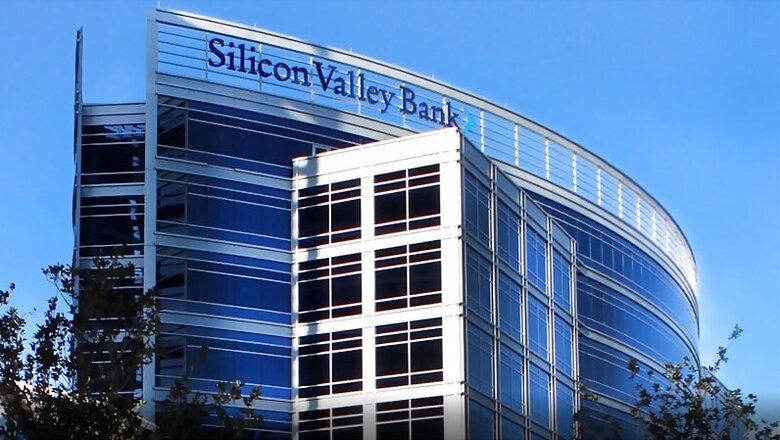
views
SVB Financial Group (SVB), which does business as Silicon Valley Bank (SVB), is in a tough spot after a capital raise caused a steep 60 per cent collapse in its share value, wiping out over $80 billion in value from the bank shares. This happened when the Silicon Valley Bank on Wednesday launched a $1.75 billion share sale to shore up its balance sheet and navigate declining deposits from startups struggling for funds amid increased spending.
Silicon Valley Bank is a commercial bank and one of the largest in the United States. SVB has relationships with over 50 per cent of all venture-backed companies in the US and countless Venture Capital (VC) firms.
SVB’s financial profile benefits from an abundance of client funds, which includes on-balance sheet deposits and off-balance sheet client investment funds. Its average client funds were at a high at $348 billion in Q4 2022. Last year, the lender increased its Federal Home Loan bank borrowing in the second half of 2022, which resulted in a market funds/tangible banking asset ratio of 9.1 per cent as of 31 December 2022, whereas historically this ratio was very low. The bank’s net interest margin (NIM) declined to 2.0 per cent for Q4 2022 and a 13 per cent linked-quarter decline in net interest income.
The SVB Crisis
In 2021, SVB saw a mass influx in deposits, which jumped from $61.76 billion at the end of 2019 to $189.20 billion at the end of 2021.
As deposits grew, SVB could not grow its loan book fast enough to generate the yield it wanted to see on this capital.
Therefore, the bank purchased a large amount (over $80 billion) in mortgage-backed securities (MBS) with these deposits for their hold-to-maturity (HTM) portfolio. Almost 97 per cent of these MBS were 10+ years in duration, with a weighted average yield of 1.56 per cent.
However, with the rise in Fed rates, the value of SVB’s MBS plummeted. This is because investors can now purchase long-duration “risk-free” bonds from the Fed at a 2.5x higher yield. Precisely, with the rising US Fed interest rates, the value of existing bonds with lower payouts fell in value.
What led to the SVB Stock Crash?
Santa Clara-based SVB Financial Group announced that it sold $21 billion of securities from its portfolio. SVB Financial Group also said it was holding a $2.25 billion share sale to shore up finances. The move was prompted by high deposit outflows at the bank due to a broader downturn in the startup industry, analysts say. It also forecast a sharper decline in its net interest income (NII).
The move spooked many prominent venture capitalists, including Peter Thiel’s Founders Fund, Coatue Management and Union Square Ventures, who have instructed portfolio businesses to limit exposure and pull their cash from the bank. Whereas some other VC firms have asked portfolio firms to at least shift some of their cash away.
Following this share sale by SVB Financial Group, shares of the bank on Thursday suffered their worst drop in over three decades.
The Domino Effect
According to media reports, the stocks of SVB took a hit massively after the bank launched a $1.75 billion share sale on Wednesday to shore up its balance sheet following a significant loss on its portfolio. Shares in banks have fallen worldwide – with the four largest US banks, including JP Morgan and Wells Fargo, losing more than $50 billion in market value.
What is SFB saying?
SVB Financial Group Chief Executive Officer Greg Becker held a conference call on Thursday advising clients of SVB-owned Silicon Valley Bank to “stay calm” amid concern about the bank’s financial position, according to a person familiar with the matter.
Becker held the roughly 10-minute call with investors wherein he asked the bank’s clients, including venture capital investors, to support the bank the way it has supported its customers over the past 40 years.
What’s Next?
Kotak Mahindra Bank CEO Uday Kotak wrote, “Overnight developments in US banking: markets, analysts, investors underestimate the importance of financial stability for the balance sheet of a bank. When interest rates move up 500 bps from zero in a year, an accident was waiting to happen somewhere”.
After the dramatic turn of events, Moody’s immediately downgraded the bank’s credit rating to Baa1 negative outlook from A3.
Read all the Latest Business News here


















Comments
0 comment